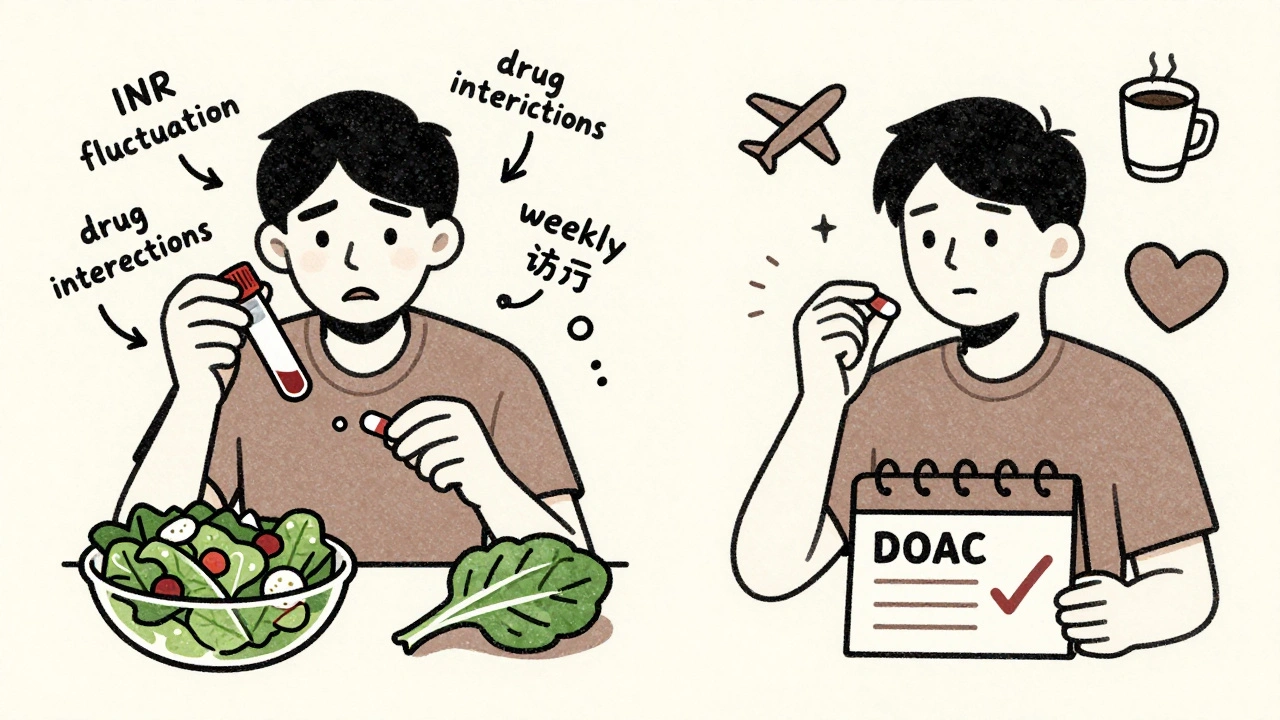Warfarin: What It Is, How It Works, and How to Use It Safely
If your doctor put you on warfarin, you’re probably dealing with a blood‑clot risk like atrial fibrillation, a deep‑vein thrombosis, or a heart valve. Warfarin is a classic anticoagulant – it slows down the clotting process so clots don’t form where they shouldn’t. Think of it as a traffic cop for your blood, keeping things moving smoothly without causing a pile‑up.
Because warfarin is so powerful, you’ll need to watch a few key numbers. The most important one is your INR (International Normalized Ratio). The INR tells you how long it takes your blood to clot compared to a normal sample. Most patients aim for an INR between 2.0 and 3.0, but your doctor might set a slightly different range based on your condition.
How to Get Your Dose Right
Warfarin dosing isn’t one‑size‑fits‑all. Your first dose is usually low, and the doctor adjusts it after checking your INR a few days later. You’ll probably need a blood test once a week at the start, then every few weeks once you’re stable. The trick is to stay consistent with food, especially vitamin K‑rich items like spinach, kale, and broccoli. Sudden changes in how much vitamin K you eat can swing your INR up or down, making dosing a headache.
Here’s a simple routine: take your warfarin at the same time each day, keep a food diary for a week, and let your doctor know if you start a new supplement or over‑the‑counter medication. Even herbal products like ginseng or St. John’s wort can mess with warfarin, so give your pharmacist a heads‑up.
Saving Money Without Cutting Corners
Warfarin is actually one of the cheaper anticoagulants, but the price can add up with regular blood‑test fees. Look for pharmacies that offer discount cards or bulk‑fill programs. In Australia, the PBS (Pharmaceutical Benefits Scheme) often covers a large part of the cost if you have a valid prescription.
Another tip: ask your doctor if a generic version is available. All warfarin tablets contain the same active ingredient, so the cheapest brand works just as well. Some online pharmacies provide a price‑match guarantee, but always verify they’re licensed and require a prescription.
Lastly, keep an eye on your insurance. Some plans list warfarin under a preferred drug tier, meaning you pay a lower copay. If you’re switching pharmacies, ask the new shop to transfer your prescription – they’ll often handle the paperwork for you.
Warfarin can feel intimidating, but once you understand the basics – what it does, why the INR matters, and how food and other meds interact – it becomes a manageable part of your health routine. Stay consistent, keep open communication with your healthcare team, and you’ll keep your blood clot risk low without breaking the bank.

Direct Oral Anticoagulants vs Warfarin: Side Effect Comparison
DOACs like apixaban and rivaroxaban are now preferred over warfarin for most patients due to lower bleeding risks and no need for frequent blood tests. But warfarin still matters for certain conditions. Learn which one is right for you.

Coumadin: Critical Facts About Warfarin, Dosage, Diet, and Management
Curious about Coumadin and how it affects daily life? This detailed guide explains how warfarin works, who needs it, key facts about monitoring, and practical lifestyle tips. You’ll find out what makes Coumadin both life-saving and tricky to manage, plus how Aussies in 2025 are navigating its challenges. Get real advice from the ground up—straight from Brisbane, with helpful tables and clear, human talk.




